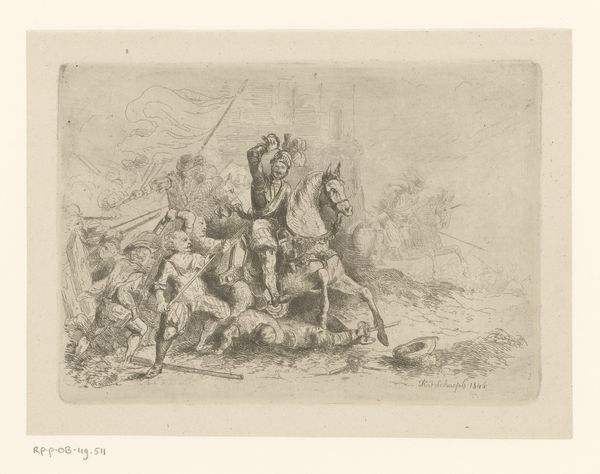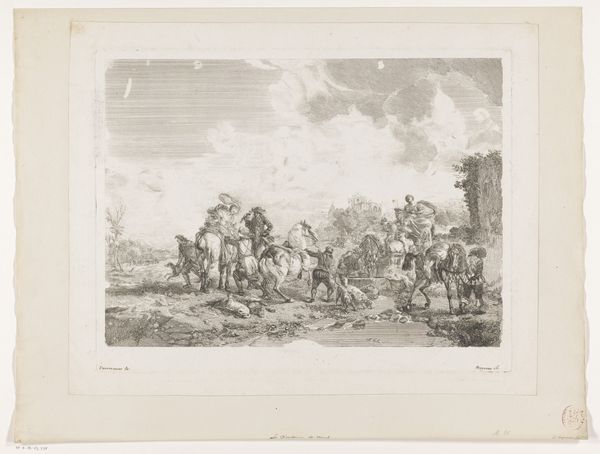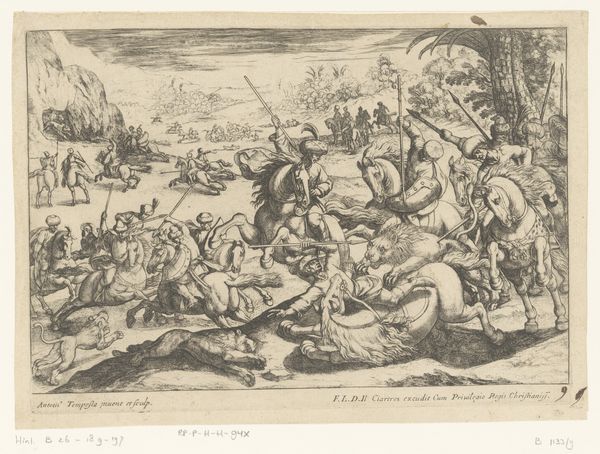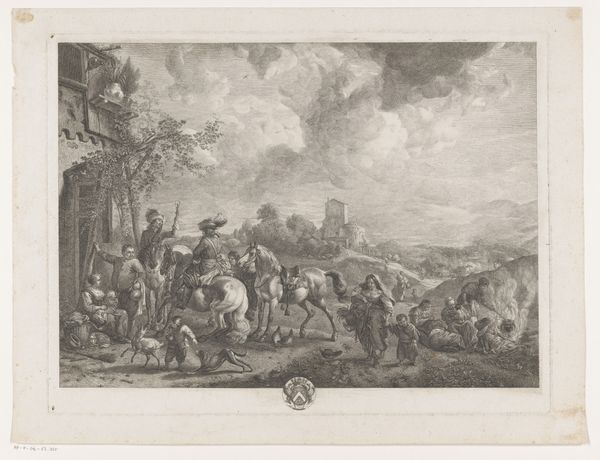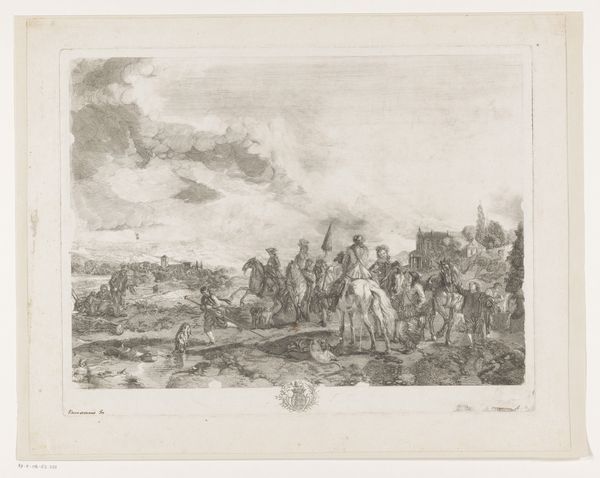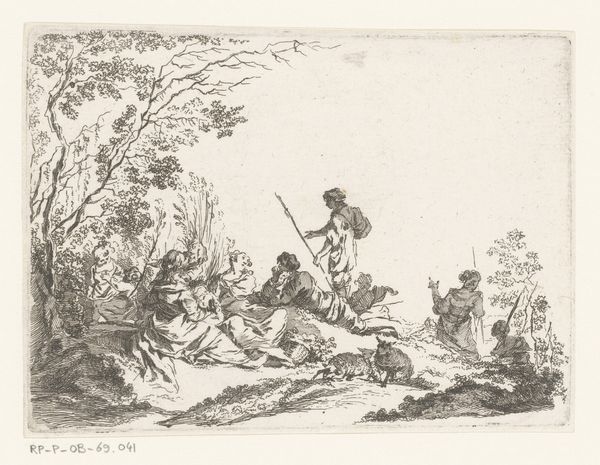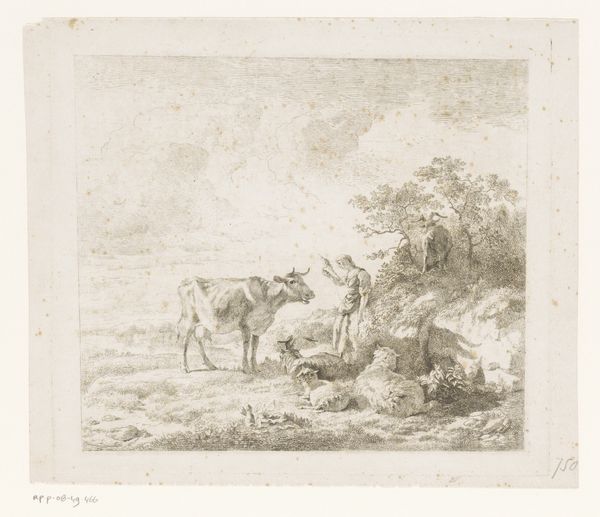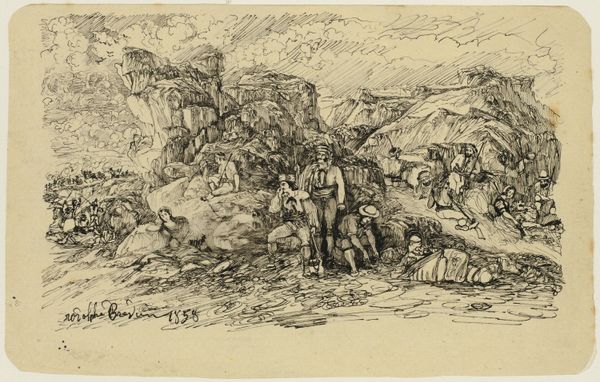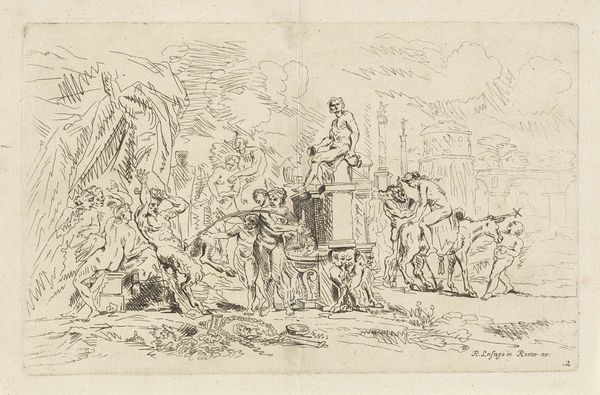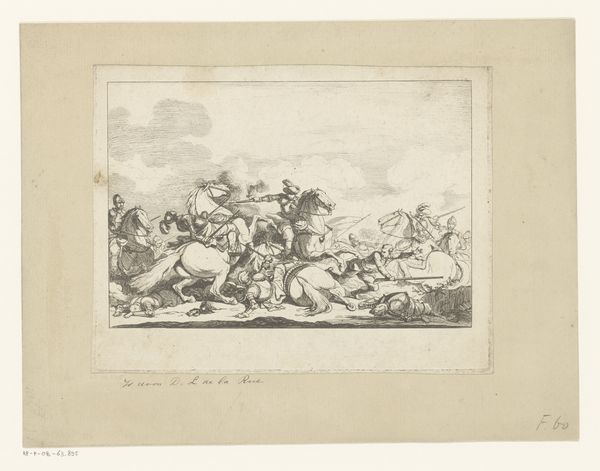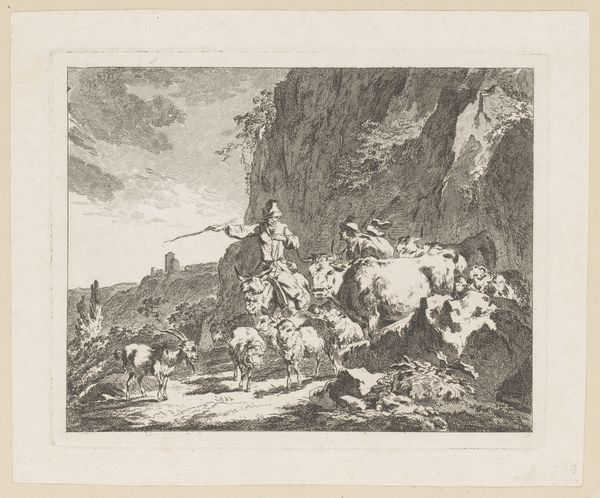
print, etching, engraving
# print
#
pen sketch
#
etching
#
pencil sketch
#
etching
#
figuration
#
romanticism
#
line
#
genre-painting
#
history-painting
#
engraving
Dimensions: height 151 mm, width 193 mm
Copyright: Rijks Museum: Open Domain
Curator: This etching, titled "Gevecht tussen cavalerie en infanterie"—"Combat Between Cavalry and Infantry"—was created by Pierre Jean Baptiste Leroy around 1805. It’s quite small, executed in a very tight, almost frantic style. Editor: It feels claustrophobic, doesn't it? All that implied movement, bodies crammed together... there's barely any breathing room. Visually, the frenetic linework definitely evokes the chaos and brutality of battle. Curator: Exactly. Observe how Leroy uses line weight to differentiate between foreground and background. The figures in the front are etched with much darker, denser lines. Notice, also, the formal strategies in the foreground. Do you see the bodies angled dramatically to convey dynamism? Editor: Yes, the composition is cleverly constructed to push viewers into the heat of the battle. And looking closer, aren’t these figures, especially the infantry, being stripped of their individual humanity? Becoming more like cogs in the imperial war machine? Leroy made this etching shortly after Napoleon came to power, and that context informs how I view this piece. Curator: An interesting reading, although not definitively supported by the artwork's formal elements alone. The artist could have been more interested in purely aesthetic concerns of Romanticism – exploring dynamic composition through the violent imagery. Editor: But aren't violence and aesthetics always intertwined, especially in depictions of conflict? This isn’t just a formal exercise, it's a charged representation of a deeply consequential historical moment, impacting diverse groups across Europe. I mean, look at how little detail is given to the faces. This contributes to the erasure of identity that is endemic to military conflict. Curator: I see your point, of course. It's a complex etching, rife with conflict—both within the depicted scene and within the act of interpreting it. Editor: Indeed. And that complexity, the formal dynamism clashing with the human cost… it stays with you, doesn't it?
Comments
No comments
Be the first to comment and join the conversation on the ultimate creative platform.
